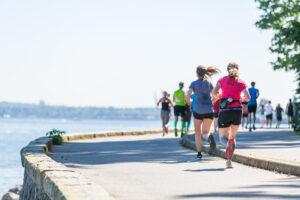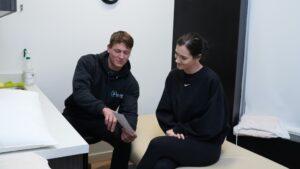Muscle Pain can be annoying and often aching- it is one of the side effects of either new or strenuous workout.
Everybody has a goal to become healthier, fitter, and happier. If you have a similar goal, you might have included exercise in your daily routine, or you might have joined the gym to stay fit. In pursuit of this goal and exercising, there are chances that you have experienced muscle pain and aches along the way.
But some people go for intense and gruelling workouts that lead to muscle soreness afterwards. What is worth noting here is that if you have just started doing exercise or sport, the muscle pain can become worse, if you do intense exercises. Don’t be too hard on yourself when trying new workouts. No doubt, if it’s your very first workout, you will be feeling great only until next morning when your muscle pain becomes so intense that it becomes hard enough to get up from your bed.
 In such a situation, when you have muscle pain, the only thing that sticks on your mind, is to find relief and reduce muscle pain somehow. If you are the one feeling constant muscle pain after doing a workout, make sure you follow these best ways to reduce muscle pain.
In such a situation, when you have muscle pain, the only thing that sticks on your mind, is to find relief and reduce muscle pain somehow. If you are the one feeling constant muscle pain after doing a workout, make sure you follow these best ways to reduce muscle pain.
1) Muscle Stretching
‘Including stretching exercises in your daily routine can help you strengthen your spine, loosen muscles while increasing muscle flexibility.’
Stretching your muscles can be the best way to prevent DOMS (Delayed Onset Muscle Soreness) after you have done a workout. Muscle stretching relieves muscle soreness and helps in quicker recovery of the entire body. Stretching also helps in reducing the build-up of lactic acid in your body. You can experience a lot of good just by stretching your muscles. But what type of muscle stretches can be done? We got you! Get your muscles ready for the upcoming rigors by simply following these stretches.
Hamstrings
- Try to stand tall while keeping your shoulders down and feet apart
- Bring forward right leg, heel down while keeping your leg straight and toes up
- Bend your right knee while keeping back straight
- Repeat the same process for the opposite leg
 Kneeling Stretch
Kneeling Stretch
- Kneel forward with your left knee and keep your right leg at 90-degree angle
- Keep back straight and put hands on your right knee
- Press your left knee to the floor while leaning forward into your right hip and squeeze the left buttock muscles
- Keep this posture for about 30 seconds
- Repeat the entire procedure for the opposite side
 Hip Flexion
Hip Flexion
- On the flat ground, lie on your back keeping your legs straight
- Take a knee and slowly pull it towards your chest (one at a time)
- Pull knee closer to the chest as much as possible (make sure you don’t feel uncomfortable)
- Come back to starting position and repeat the procedure on the other leg
 Be sure; you stretch muscles for almost 10 minutes after a demanding workout in order to prevent muscle soreness. Also, remember to warm up your body with movements such as marching on the spot and arm swings right before starting exercise.
Be sure; you stretch muscles for almost 10 minutes after a demanding workout in order to prevent muscle soreness. Also, remember to warm up your body with movements such as marching on the spot and arm swings right before starting exercise.
Trunk Rotation Stretch
- Lie on the floor straight and bent your knees
- Keep your upper back flat on the floor, start rotating your legs until you feel a stretch
- Hold this posture for about 5 seconds
- Do the same with the opposite side and repeat the process for at least 10 times
This stretch will improve the mobility in your spine as well as relax muscles on the trunk sides.
 2) Go for Physiotherapy
2) Go for Physiotherapy
If it has been quite a long time you’ve been exercising but still feeling muscle pain, it might be a sign of injury in muscle tissues. This is the high time you need to consult a physiotherapist. Physiotherapist first assesses the muscle injury and pain points then recommends the treatment plan accordingly. The hands-on technique used by physiotherapists to help individuals recover from muscle pain. Not only this, but the rehabilitation process can also help sufferers of muscle pain to recurrent injuries.







